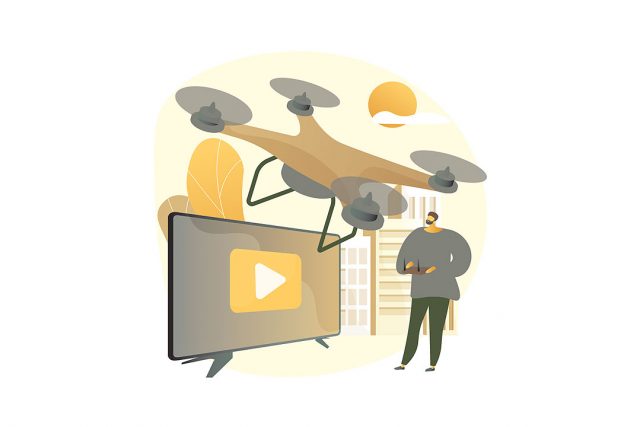
THE PANDEMIC has already given the future a distinctly dystopian look. And then there’s this: the burgeoning of the “second drone age.”
That’s how experts are describing the international drone market — which ranges from tiny startups selling $1,000-to-$2,000 off-the-shelf technology that can be easily weaponized by terrorist groups like the Taliban, to high-tech unmanned vehicles that can carry laser-guided munitions and Hellfire missiles. It’s an even more highly autonomized proliferation of the first age of drones, which has been dominated by the US since its first attack using a remotely piloted craft in 2001. Now, it’s an ungoverned, unregulated space with billions of dollars to be made and thousands of lives at stake.
The deadly shortcomings of this high-tech violence were placed squarely in the public eye with the US drone strike in Kabul on Aug. 29 that targeted terrorists but instead killed 10 Afghan civilians, including seven children. It was a failure of military intelligence and, like so many other civilian fatalities of the US air wars, including those featured in a New York Times investigation published in December, there was no finding of wrongdoing against those involved.
The transformation of defense operations has been far-reaching: 102 countries now run active military drone programs. It’s replaced thousands of troops on the ground with controllers behind computers located in bases far away from the air strikes they are launching. In the US, fewer troop deaths mean less pressure at the ballot box and less congressional oversight. It allows leaders of many countries and the proxies that support them to get away with what amounts to murder, often of their own citizens, as we’ve seen in the conflicts in Syria and Yemen.
All of this is happening without any overarching regulatory regime to protect civilian populations and uphold humanitarian laws, or to examine the operational and tactical ramifications of this remote-control warfare.
That’s what worries experts like Paul Lushenko, a US Army lieutenant colonel and a Ph.D. scholar at Cornell University. Drones are not just a form of war but a tool of unregulated intra-state political violence, Lushenko told me, representing a “dystopian view of what’s developing right now.”
Lushenko, who co-edited the newly released Drones and Global Order: Implications of Remote Warfare for International Society with Srinjoy Bose, a senior lecturer in international relations at the University of New South Wales, and William Maley, an emeritus professor at the Australian National University, is just one of many advocating for better regulation and more public scrutiny of drone operations. The US withdrawal from Afghanistan in August provides an ideal moment for that post-mortem, he notes.
There has been some attempt at oversight. The Missile Technology Control Regime, an informal political understanding among 35 members, seeks to limit the proliferation of and trade in missiles and missile technology — which arguably covers attack drones. But there’s no enforcement mechanism, Lushenko says. It’s certainly not equipped to regulate armed and networked drones, which can take as many as 200 people to operate, including those controlling them from the US, as well as launching them from bases abroad.
Drones are a gateway technology, Agnes Callamard noted in June as she marked the end of her five years as the United Nations special rapporteur on extrajudicial, summary, or arbitrary executions. They’ve opened the door to weaponized artificial intelligence, algorithmic and robotic warfare, and loosened human control over the deployment of lethal force. Today’s armed drones, she wrote, are tomorrow’s killer robots. She says the absence of a control mechanism for a new generation of weapons of mass destruction represents a significant threat.
Callamard, now the secretary general of Amnesty International, has called for a specific “Drone Technology Control Regime” and says nations should establish a multilateral process to develop standards for the design, export, and use of drones as well as stricter controls on the transfer of military technologies. Sales agreements, she says, should include civilian protection and adherence to international human rights and humanitarian law.
This gaping hole in international oversight has allowed major powers like the US to flout global norms (like the US drone strike that killed the commander of Iran’s Islamic Revolutionary Guard Corps’ elite Quds force, Qassem Soleimani, in Iraq in January 2020). Large-scale manufacturers now negotiate sales directly with prospective buyers who have clear military and security uses in mind. It’s seen Turkey emerge as a drone superpower in the sector, which market intelligence firm BIS Research estimated was worth $28.5 billion in 2021.
The US has already expressed its concerns over Turkey’s sale of weaponized drones to Ethiopia, where the government of Prime Minister Abiy Ahmed Ali is suspected of using them against rebel forces in the Tigray region in a civil war that’s killed thousands of civilians and forced more than 2 million people to flee their homes. The conflict between Armenia and Azerbaijan over the disputed Nagorno-Karabakh region saw Azerbaijan emerge as the clear victor using Russian, Turkish, Israeli, and indigenous drones to overpower its neighbor’s less sophisticated military.
All this illustrates the size of the logistical challenges facing the Biden administration and its plans for an “over-the-horizon” strategy in Afghanistan. The policy depends on other countries agreeing to house US bases to enable Washington to continue its counterterrorism efforts, including the use of armed drones. But without regulation and oversight, the only certainty here is that the technology will continue to advance everywhere. There will be more civilian casualties — and no one will be held accountable.
BLOOMBERG OPINION
The Second Drone Age is here and it’s a free-for-all
Source: Bantay Radio
0 Comments